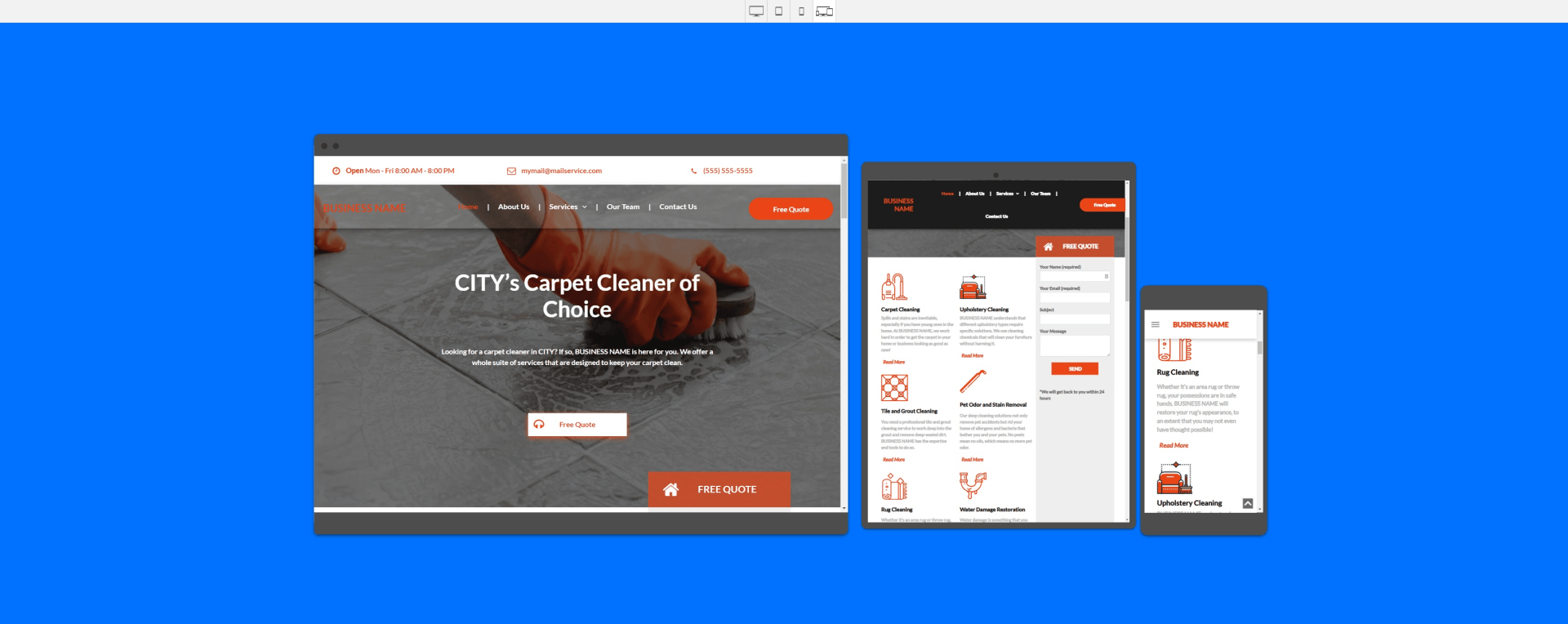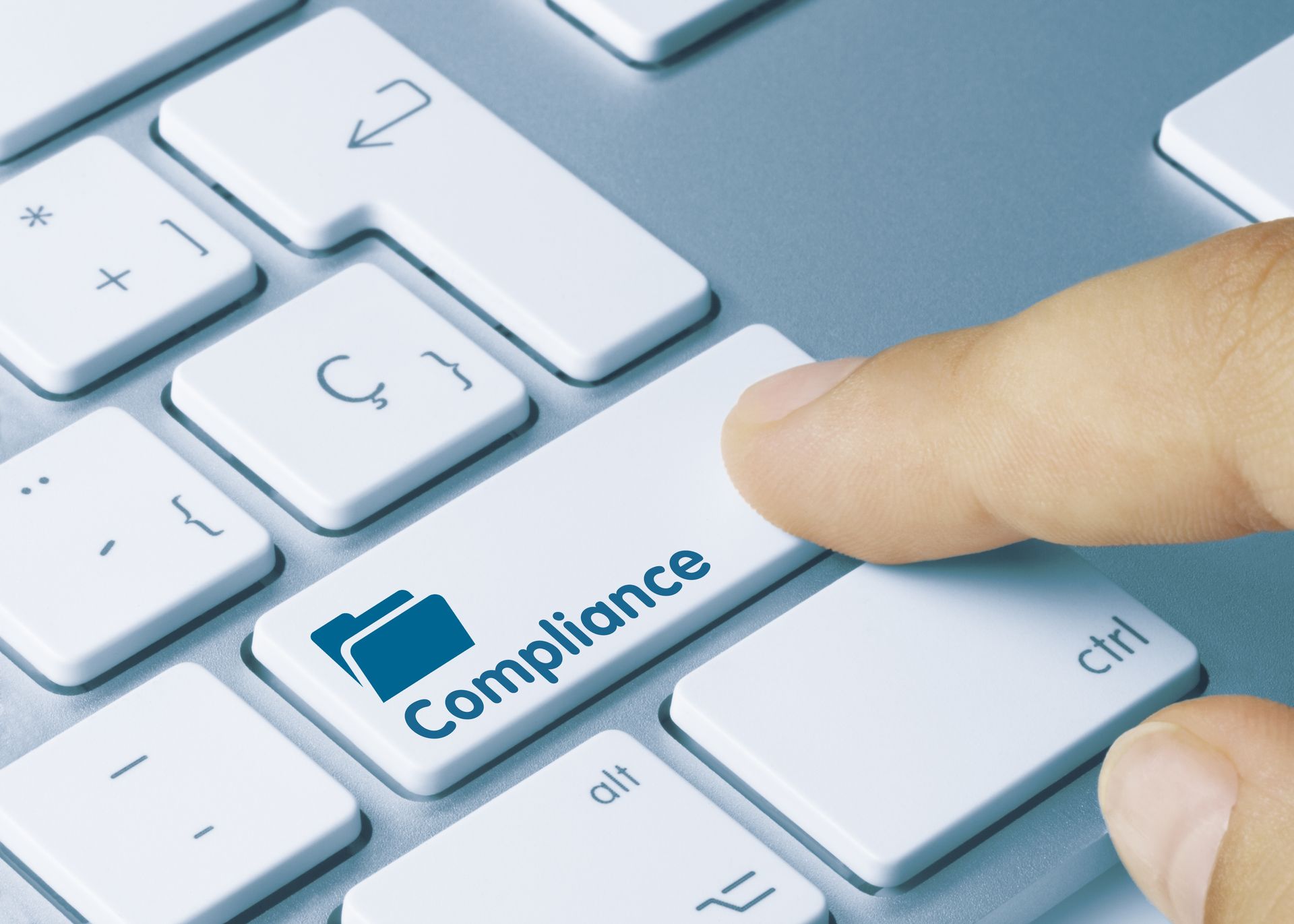
How to Increase Your Client Base with SEO for Hair Salons
Did you know that the global hair salon industry is worth over $128 billion? With such a massive market, it's crucial for salons to stand out from the competition. One way to do this is by leveraging the power of search engine optimization (SEO). By mastering SEO, your hair salon can rise above the noise and attract new clients, resulting in increased revenue. In this comprehensive guide, we'll walk you through the ins and outs of SEO for hair salons, covering everything from the basics to advanced strategies that will help you dominate search results.
- SEO is essential for hair salons to maximize visibility and attract new customers.
- Implementing a mobile-friendly, fast, and secure website are key technical aspects of salon SEO.
- Content marketing & social media can be leveraged to expand reach & build brand awareness. Tracking progress with tools like Google Analytics is important for successful optimization strategies.
Understanding SEO for Hair Salons
Search engine optimization (SEO) is a complex process that involves optimizing your salon's website to rank as high as possible on search engines like Google and Bing. With a well-executed SEO strategy, your hair salon's website will appear more prominently in search results when people search for relevant salon phrases in your area.
This increased visibility can lead to a significant boost in new clients and revenue for your business.
The Basics of SEO
The foundation of successful salon SEO lies in three main elements: on-page optimization, off-page optimization, and local SEO. On-page optimization involves incorporating relevant keywords into your website's content, titles, headings, and meta descriptions. This helps search engines understand what your salon website is about, allowing them to match your site with appropriate search phrases.
Off-page optimization, on the other hand, focuses on obtaining backlinks from other relevant websites, which can boost your website's authority and search engine ranking. Long-tail keywords play a crucial role in the success of your salon's SEO strategy. These specific keywords, such as "vegan hair salon in Birmingham" or "best waxing in Manhattan," have less competition and are more likely to rank higher in search results. Moreover, targeting these specific keywords attracts visitors who are more likely to convert into customers.
Importance of SEO in the Salon World
SEO is not just about improving your salon's online presence; it also has tangible benefits for your bottom line. By implementing effective SEO strategies, your hair salon can enjoy increased visibility, brand recognition, and the potential to attract new clients. This, in turn, can lead to higher revenues and long-term growth for your salon business.
But executing a successful SEO campaign for hair salons is no easy feat. It requires a deep understanding of the intricacies of SEO, as well as the ability to adapt to the ever-changing landscape of digital marketing. This is where experienced SEO service providers come in, helping you navigate the complexities of salon SEO and ensuring your website ranks high in search results for relevant keywords.

Optimizing Your Salon Website for Better Search Visibility
Now that you have a clear understanding of your salon's current SEO status and areas for improvement, it's time to optimize your website for better search visibility. This involves conducting keyword research and implementation, employing on-page optimization techniques, and executing off-page optimization practices.
By focusing on these key areas, you can significantly improve your salon's search engine rankings, attract more website visitors, and ultimately, drive more business to your salon.
Keyword Research and Implementation
Keyword research is the foundation of any successful SEO strategy. By identifying the most relevant and popular search terms for your salon, you can tailor your website's content to better match the needs and interests of your target audience. This, in turn, will help improve your website's search engine rankings and attract more potential clients.
To conduct keyword research, use tools like Google's Keyword Planner or other third-party alternatives. Start by inputting broad terms related to your salon, such as "hair salon" or "beauty services," and analyze the search volume and competition for those terms. This will help you identify valuable long-tail keywords that are more specific and have less competition, making it easier for your salon to rank higher in search results.
On-Page Optimization Techniques
Once you have identified your target keywords, it's essential to optimize your website's content accordingly. On-page optimization involves incorporating these keywords into your website's titles, headings, meta descriptions, and body content. This will help search engines understand the relevance of your website to specific search queries, improving your chances of ranking higher in search results.
Additionally, it's crucial to ensure your website is easy to navigate and provides a positive user experience. This includes having a clear site structure, using descriptive and informative headings, and making sure all links are working correctly.
By optimizing your website's on-page elements, you can create a more engaging and user-friendly website that will appeal to both search engines and potential clients.
Off-Page Optimization Practices
Off-page optimization refers to the external factors that can influence your salon's search engine rankings. One of the most critical off-page factors is the number and quality of backlinks pointing to your website.
High-quality backlinks from authoritative websites can significantly boost your salon's search engine rankings, as they signal to search engines that your website is a valuable and trustworthy resource.
To build high-quality backlinks, consider reaching out to relevant websites in your industry and offering to write guest posts or collaborate on content. Additionally, consistently creating high-quality, shareable content on your own website can help attract natural backlinks from other websites.

Assessing Your Salon's Current SEO Status
Before diving into advanced SEO strategies, it's essential to assess your salon's current SEO status. This involves checking your website's ranking in search results and identifying areas for improvement. By understanding where your salon stands in terms of SEO, you can prioritize your efforts and ensure your resources are allocated effectively.
Keep in mind that SEO is an ongoing process, and it's crucial to stay up-to-date with the latest trends and best practices. Regularly monitoring your salon's SEO performance will help you identify new opportunities for growth and address any issues that may be holding you back.
Checking Your Website's Ranking
To assess your salon's search engine ranking, perform searches using relevant phrases such as "hair salon near me" or "hair salon in [your city]" on your mobile device. Take note of your salon's position in search results and compare it to your competitors. This will give you a clear understanding of your current standing and help you identify areas where your SEO strategy may be lacking.
It's also essential to track your salon's performance over time. Tools like Google Analytics can provide valuable insights into your website's traffic, user behavior, and overall performance. By monitoring these metrics, you can identify trends and make data-driven decisions to optimize your SEO strategy further.
Identifying Areas for Improvement
Once you have a clear understanding of your salon's current SEO status, it's time to pinpoint areas for improvement. This may involve optimizing your website's loading speed, ensuring your website is mobile-friendly, or updating your content to better reflect the needs and interests of your target audience.
Additionally, it's essential to stay informed about the latest SEO methods and best practices. Search engine algorithms are constantly evolving, and staying up-to-date with these changes will help you maintain a competitive edge in the salon industry.
Regularly revisiting your SEO strategy and making adjustments based on new developments and trends will ensure your salon remains at the forefront of search results.

Enhancing Local SEO for Your Hair Salon
Local SEO is a critical component of any hair salon's SEO strategy, as it helps ensure your salon is visible to potential clients in your local area. By optimizing your website for local SEO, you can attract more customers who are actively searching for hair salons near them, ultimately driving more foot traffic and revenue to your salon.
Enhancing local SEO for your hair salon involves creating a Google Business Profile, utilizing local keywords and geographic modifiers, and ensuring your website is optimized for mobile devices.
Importance of Local SEO
Local SEO is essential for hair salons as it enables them to be more visible to potential customers in their local area. By targeting a local audience, you can attract more focused search traffic, leading to higher conversion rates and increased revenue for your salon business.
Furthermore, local SEO can help your salon stand out from the competition by ensuring your website appears at the top of search results for location-specific queries. This can make all the difference in attracting new clients and maintaining a steady stream of business.
Creating a Google Business Profile
A Google Business Profile is a crucial tool for enhancing local SEO, as it helps your salon appear more prominently in Google search results and Google Maps. To create a Google Business Profile, simply claim or create a listing for your salon and verify it. Be sure to provide accurate and up-to-date information about your salon, including your address, phone number, and operating hours.
Once you have created and verified your Google Business Profile, you can optimize it further by adding photos, responding to reviews, and posting updates about your salon. This will not only help improve your salon's local SEO, but also engage potential clients and encourage them to visit your salon.
Utilizing Local Keywords and Geographic Modifiers
Incorporating local keywords and geographic modifiers into your salon's website content can help improve your local SEO efforts. Local keywords refer to search terms that include the name of a specific area, such as a city or neighborhood, while geographic modifiers are words or phrases that indicate a location, like "near me" or a zip code.
By including local keywords and geographic modifiers in your website's title tags, meta descriptions, and content, you can ensure your salon appears in search results for location-specific queries. This can help attract more local customers who are actively searching for hair salons in your area.

Technical Aspects of Salon SEO
Beyond keyword optimization and local SEO, there are several technical aspects of salon SEO that are crucial for ensuring your website ranks well in search results. These technical factors include making sure your website is mobile-friendly, fast, and secure.
By addressing these technical aspects of your salon's website, you can create a better user experience for your visitors, which can ultimately lead to higher search engine rankings and increased traffic to your salon.
Mobile-Friendly Design
With the majority of online searches now being conducted on mobile devices, it's more important than ever for your salon's website to be mobile-friendly. A mobile-friendly website design ensures that your content is easy to read and navigate on smaller screens, providing a better user experience for potential clients.
Search engines like Google also prioritize mobile-friendly websites in their search results, meaning that having a mobile-friendly design is essential for your salon's SEO success. To ensure your website is mobile-friendly, consider using a website builder that includes mobile support or work with a web developer to update your website's design.
Website Speed and Security
Website speed and security are two other crucial technical aspects of salon SEO. Slow-loading websites can lead to high bounce rates, as visitors are more likely to leave your site if it takes too long to load.
Research has revealed startling results. If a website takes more than 3 seconds to load, over 50% of people viewing it will leave the page. To optimize your website's speed, consider using a content delivery network (CDN) or working with a web developer to address any underlying speed issues.
Security is also critical for your salon's website, as it helps protect both your business and your customers from malicious attacks and data breaches. Ensuring your website uses a secure socket layer (SSL) certificate and a web application firewall (WAF) can help safeguard your site and improve your salon's SEO performance.

Monitoring Your Salon's SEO Progress
Monitoring your salon's SEO progress is a crucial aspect of any successful SEO strategy. By regularly tracking your website's performance, you can identify areas for improvement and ensure your SEO efforts are yielding the desired results.
In this section, we'll discuss the importance of monitoring your salon's SEO progress and the tools available to help you track your website's performance.
Using Google Analytics and Webmaster Tools
Google Analytics 4 and Google Search Console are two valuable resources for monitoring your salon's SEO progress. These tools provide insights into your website's traffic, user behavior, and overall performance, allowing you to make data-driven decisions to optimize your SEO strategy further.
By regularly reviewing your website's performance in Google Analytics and Webmaster Tools, you can identify trends, track the success of your SEO efforts, and make adjustments as needed to ensure your salon remains at the top of search results.
Adapting Your SEO Strategy
As search engine algorithms and industry trends evolve, it's essential to stay informed and adapt your salon's SEO strategy accordingly. Regularly revisiting your strategy and making adjustments based on new developments and trends will help ensure your salon remains competitive in the ever-changing digital landscape.
By staying up-to-date with the latest SEO best practices and continuously monitoring your salon's progress, you can ensure your website remains visible to potential clients, driving more traffic and ultimately boosting your salon's bottom line.

Content Marketing and Social Media for Salons
In addition to optimizing your salon's website for search engines, content marketing and social media can play a significant role in driving traffic to your site and attracting new clients. By creating engaging, informative content and promoting your salon on social media platforms, you can reach a wider audience and build brand awareness for your salon.
In this section, we'll discuss the importance of content marketing and social media for salons, as well as strategies for creating engaging content and promoting your salon on various social media platforms.
Creating Engaging and Informative Content
High-quality, engaging content is the backbone of any successful content marketing strategy. By creating informative and valuable content that appeals to your target audience, you can help establish your salon as an industry expert and drive more traffic to your website.
Start by conducting thorough keyword research to identify the topics and search terms your potential clients are interested in. Then craft content that addresses these topics, incorporating the relevant keywords and providing valuable information that keeps your audience engaged.
By consistently producing high-quality content, you can attract more website visitors, build trust with your audience, and ultimately convert more visitors into clients.
Promoting Your Salon on Social Media
Social media platforms like Facebook, Instagram, and Twitter can be powerful tools for promoting your salon and driving traffic to your website. By sharing engaging content, interacting with your audience, and leveraging the unique features of each platform, you can expand your salon's reach and attract new clients.
Some effective strategies for promoting your salon on social media include posting before-and-after photos, offering exclusive promotions and discounts, sharing user-generated content, and highlighting your salon's unique features and services.
By actively engaging with your audience on social media, you can build a loyal following and drive more business to your salon.

In conclusion
SEO is a vital aspect of any successful hair salon's marketing strategy. By mastering the basics of SEO, optimizing your website for better search visibility, enhancing local SEO, addressing technical aspects, and leveraging content marketing and social media, you can drive more traffic to your salon, attract new clients, and ultimately increase your revenue. With the right SEO strategy in place, your salon can rise above the competition and thrive in the ever-growing hair salon industry.
What is salon marketing?
Salon marketing is a process of promoting and selling salon services to customers. It involves creating awareness about the services offered by the salon, targeting potential customers through various channels, and convincing them to book appointments or walk-ins. Salon marketing is important for business growth as it helps to attract new customers, retain existing ones, and increase revenue.
One of the key elements of successful salon marketing is understanding your target audience. By knowing who your ideal customer is and what their needs are, you can tailor your marketing efforts to appeal to them. This could include offering deals on specific services they may be interested in or using social media platforms that they are active on. Another important aspect of salon marketing is creating a strong brand identity that reflects the values and personality of your business. This includes having a consistent visual aesthetic across all advertising materials such as logos, website design, and social media graphics.
How do I promote my salon business?
Promoting your salon business can be challenging, but with the right strategies and tactics, you can attract more customers and increase your revenue. The first step is to create a strong online presence. Use social media platforms like Facebook, Instagram and Twitter to share pictures of your work, post special offers or discounts, and interact with potential customers.
Another effective marketing strategy is to offer referral incentives for existing clients who bring in new customers. You could give them a free haircut or discount on their next service for each person they refer. This not only rewards loyal clients but also helps you expand your customer base.
Partnering with other local businesses can also be beneficial for promoting your salon business. Reach out to nearby hotels or wedding venues where people may need hair and makeup services. Offer discounted rates or package deals in exchange for referrals from these businesses.
How do I get my salon on Google?
If you own a salon, it is essential to have an online presence. One of the best ways to achieve this is by getting your salon on Google. Google is one of the most popular search engines, and having a listing on it will make it easier for potential customers to find your business.
To get your salon on Google, you need to create a Google My Business account. Start by visiting the Google My Business page and clicking on “Start Now.” You will then be prompted to enter your business name and address. Once you have entered this information, Google will verify that you are the owner of the business before allowing you to add any additional details.
After verifying ownership, you can add information such as phone number, website URL, opening hours, and photos of your salon. It’s important that all information provided is accurate since this makes it easier for customers to find and contact your business.
How do you scale a hair salon?
Scaling a hair salon can be a daunting task for many business owners. However, it is essential if you want to take your business to the next level and reach new heights of success. There are numerous strategies that you can implement to scale your beauty salon, including hiring more staff, expanding your services, and increasing your marketing efforts.
One of the most important things that you need to do when scaling a hair salon is to hire more staff. As your business grows, you will need additional hands on deck to ensure that you can keep up with demand. Hiring competent and skilled staff members will not only help you deliver better service but also improve the overall experience for customers.
Another strategy that you should consider when scaling a hair salon is expanding your services.








Unlock the Unlimited Potential of Your Business
Our professionals stop at nothing to provide excellent digital marketing solutions.
Do you want your business to be found all over online? Small Biz SEO can help. We are a marketing company that specializes in SEO for small business growth. Our team of SEO experts can help you get the most out of your website and increase your online visibility.
Our Services
All Rights Reserved | Small Biz SEO





















